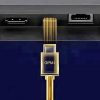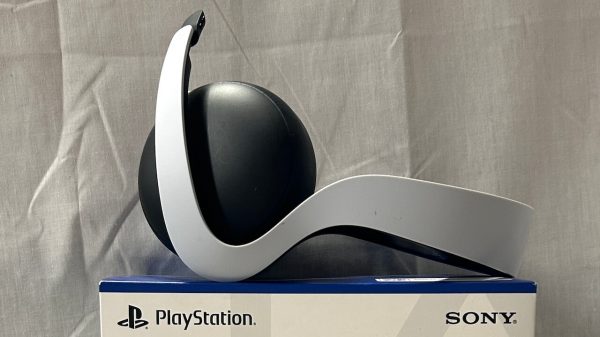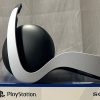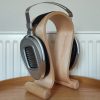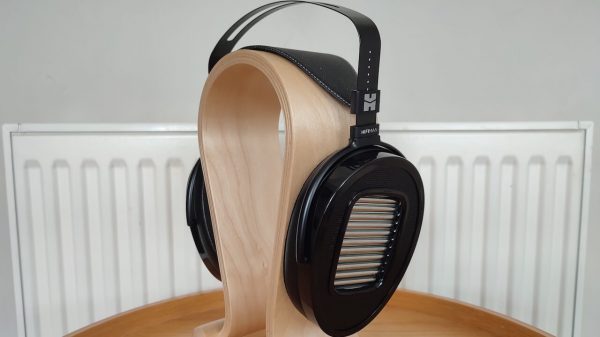When you mention Stax in headphone circles, everyone seemingly claims to either own a pair or have plans to buy one of their electrostatic headphones. The iconic loudspeaker brand changed hands in 2011 and has been owned by Edifier in China ever since.
Edifier is better known for it affordable powered loudspeakers, and after more than a decade of keeping Stax relevant in the high-end headphone community, it has decided to enter the wireless category with something unique.
The Edifier Stax Spirit S3 Wireless Planar Magnetic Headphones might throw some for a loop, but the technology utilized in the design is not new and they would not be the first to offer a wireless planar magnetic headphone; HiFiMAN introduced the Ananda-BT years ago but the model didn’t exactly set the market ablaze for the simple reason that the price was way too high.
Being first in the high-end wireless market when most wireless headphones at the time were selling for $200 to $300 came with some risks.
HiFiMan’s $799 asking price in 2022 doesn’t seem so bad compared to the $999 Mark Levinson No. 5909 or forthcoming T+A model that will retail for $1,500.
The $399.99 (USD) Edifier Stax Spirit S3 looks like a great deal, but it also lands in a category dominated by Sony, Bose, and Sennheiser.
It’s not enough to be good at that price — a wireless headphone has to be excellent and offer a really compelling reason to be selected over the aforementioned brands that have won every possible accolade for their current generation of products.

The Skinny
The first things that stand out about the Spirit S3 are the industrial design and size of the headphones; planar headphones (as a general rule) tend to be larger because of the size of the drivers and ear cups and it would be fair to label the Spirit S3 as medium sized. If you are familiar with the typical Audeze or ZMF models — these definitely look and feel smaller on your head.
The ear cups feel slightly cramped and it might even be more accurate to call these on-ear headphones if your ears are slightly larger. Edifier markets them as “Over Ear” wireless headphones but it is a tight fit.
The planar driver utilized in the Spirit S3 are a combination of Edifier’s EqualMass diaphragm and Audeze’s Fluxor magnetic structure. Audeze’s Uniforce diaphragm technology and Fazor phase management are also part of the design. The 89mm x 70mm planar driver promises a lot from an engineering perspective but how it is implemented is equally as important.
The supplied carrying case is a clamshell design that offers solid protection for the headphones and feels well made. Internally, the case features a suede-covered divider that protects each ear cup by inhibiting their ability to make contact with the other.

The top section of the case holds the cable, a 6.35mm adapter, a guitar pick, and the manuals. The mesh pocket has its own protective cover to keep everything secure even if the case gets knocked around.
Edifier supplies two sets of ear pads with the Spirit S3; the standard leather set comes pre-attached to the headphones and a secondary set which the company calls “Ice Feeling Earmuffs.”
The latter are a perforated set of ear pads which allow for better airflow keeping the listener cooler during those extended listening sessions. The ear pads also change the sound — which we’ll get to later in the review.
The construction is mostly plastic, and there were a few moments when I could hear the headphone creak slightly; it’s not something that most people will notice while listening to music but something in the headband of ear pieces was making the sound.
The ear pads are rather thick and they certainly make longer listening sessions more comfortable. The passive isolation is above average for this type of design once you have the headphone adjusted properly on your head and you create a good seal.
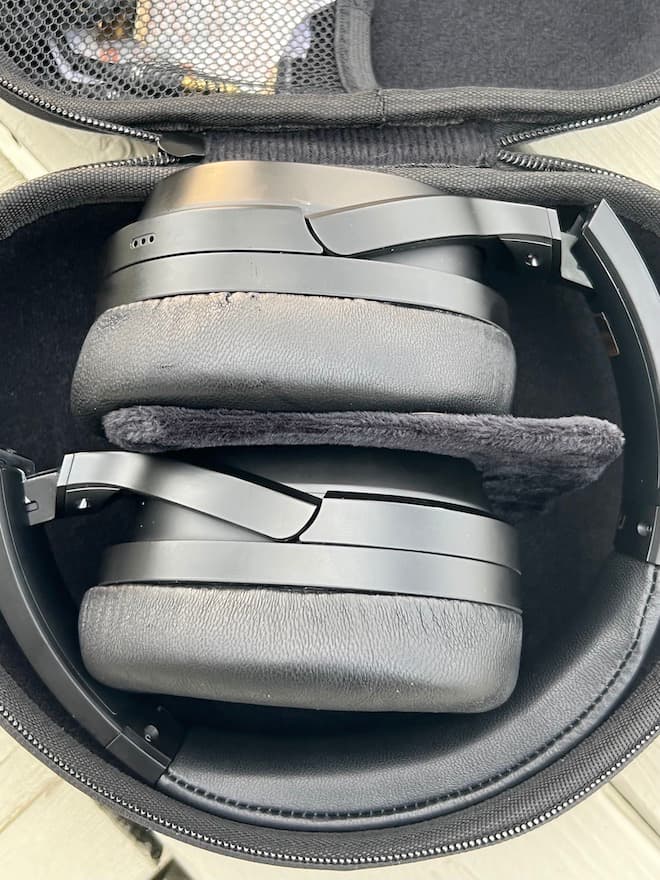
The headband offers an adequate degree of adjustment and it was not an issue to find the rest sizing; the clamping pressure, however, is somewhat on the tighter side and is worth noting.
Some people might take issue with it, but having worn the Edifier Stax Spirit S3 for a few weeks and on multiple plane trips across the country, the clamping force is something that one becomes accustomed to and the headphones never made me feel that they could become easily dislodged if someone bumped into me.

Specifications
- Bluetooth version: v5.2
- Audio codecs: Qualcomm aptX Adaptive, Qualcomm aptX HD, Qualcomm aptX, SBC
- Driver unit: 89mm x 70mm Planar Magnetic Driver
- Playtime: 80 hours
- Charging time: 1.5 hours
- Charging port: USB Type-C
- Battery capacity: 1500mAh
- Input: 5V/1.5A
- Mircophones: 1
- Microphone Type / Size: MEMS / 3.50X2.65X0.98mm
- Microphone Sensitivity: -37dBFS±1dBFS
- Frequency response: 20Hz~40KHz
- Sound pressure level: 94±3dB SPL (A)
- Impedance: 24 ohms
- Weight: 329 grams
- Dimension (L x W x H mm): 208 x110 x 255mm
The satin black finish of the plastic conveys a look of quality and the faux carbon faceplate with the bronze inlaid “S” logo definitely stands out. A few fellow travelers asked me what kind of headphones they were.
The padded headband is thickest at the top of the band where it makes the most contact with your cranium and the design helped to spread out the pressure.

Connectivity
The controls have been placed on the underside of the right ear cup only and this seems like the ideal time to discuss what we found to be slightly odd about the configuration. The placement seems like a smart choice but the buttons don’t intuitively work in the way one would think; pressing the front control does not advance to the next track — it either restarts the current selection or goes back to previous song.
The rear button does the exact opposite. Not ideal.
The center button allows the listener to play/pause music, and another press lets you answer/end a phone call. The controls are very responsive but you really want to go into the Edifier app and change these functions. Do it almost immediately.

The microphones are on both ear cups and the 3.5mm headphone jack is on the left ear cup only.
One odd operational quirk that we have confirmed with fellow reviewers from other publications is that the volume levels when using the wired connection are not the same as the wireless connection. We tried multiple devices and had the same issue.
The app is available for either Android or iOS devices and it proved to be rather useful; Edifier has created 3 EQ settings for the the Spirit S3; Classic, Hi-FI, and Stax-Mode.
Each setting creates a very different curve; there is no ability to modify these EQ options which the company should rectify with its next firmware update.
The aforementioned ear pads do have a great deal of impact on the sound and users do have the ability to tailor the sound somewhat depending on which ear pads you are using.
The standard ear pads help create a warmer sounding tonal balance and presentation, whilst the perforated pads turn the Spirit S3 into more analytical sounding headphones.
Edifier also wants users to utilize the Spirit S3 for gaming and have included a “gaming” mode with low latency to keep the sound in sync with the action on your television or computer screen.



Battery Life & ANC Performance
Edifier advertises 80 hours of playback time on a full charge and multiple tests proved this to be very accurate; not having ANC to drain the battery certainly helps.
Listening at medium volume levels created the ideal scenario for maximizing battery life; the headphones also offer a quick charge feature that delivers over 11 hours from only 10 minutes of charging.
Another quirk involves the battery; plugging the headphones into your source does not charge the battery. You continue to drain while plugged in.
The Spirit S3 are not ANC wireless headphones and the microphones only work for making phone calls; the absence of ANC might be a deal breaker for some but not everyone cares about that function. We agree that the passive isolation does not offer the same level of isolation and you do hear more noise on the plane or while walking around town.
The Bluetooth codec support is excellent and does result in better wireless sound quality performance.

Sound
The “Classic” setting offers the most neutral tonal balance and balanced presentation and became my preferred setting for the vast majority of our testing; switching over to “Hi-Fi” mode resulted in a recessed sounding midrange with vocals being being pushed back in the mix.
Cymbals were far more aggressive sounding and the soundstage was rather narrow with many recordings.
The “Stax” mode offered a rather balanced sounding presentation but with slightly less bass than the “Classic” setting. It didn’t emphasize any part of the spectrum to a greater degree but there was some added midrange warmth that proved to be a positive with vocals; detail, resolution, and texture, which felt somewhat lacking with the “Hi-Fi” setting was very present in this mode.
The top end response in “Stax” mode offered the most clarity, energy, and sense of airiness. Listeners should most certainly stick with the “Classic,” or “Stax” modes with all genres of music.
Listening to Jeff Beck & Johnny Depp’s “Midnight Walker,” the Spirit S3 did not come across as too soft in the low end, and its reproduction of the cello highlighted that it is quite capable when it comes to timbral accuracy, resolution, and detail.
Beck’s guitar was pushed somewhat forward in the mix, but the detail retrieval, growl, and speed were excellent. The Spirit S3 are not laid back sounding headphones; the overall tonal balance and presentation is faithful to what is on the recording and you will certainly hear any shortcomings in that regard.
The headphones also proved rather sensitive when streaming from my iPhone 13 Pro Max; it became necessary to lower the volume on my smart phone with a number of tracks because the levels were too high.
Regardless of whether the material was jazz or classic rock, the Edifier Stax Spirit S3 were very accurate in their reproduction of horns and cymbals; there was more than enough bite and top end presence to keep one engaged, without any sense of hardness unless one really pushes the volume into dangerous territory.

If you’re looking for a planar magnetic headphone that emphasizes accuracy and detail — these might be for you.
The bass response is tight and well controlled, but my preference would have been greater impact which felt somewhat lacking.
Switching to the “Ice Feeling Earmuffs” (terrible name), the sound became more transparent and detailed — and also slightly more intimate from a presentation and soundstage perspective. The trade-off is a lack of midrange body and low end impact — something that is already a weakness.
Conclusion
The Edifier Stax Spirit S3 had to be really good to even warrant a recommendation in the $400 category that is dominated by Sony, Bose, and Sennheiser. The absence of ANC is certainly not a plus in this segment — especially because most people shopping in this range demand it if these are their final destination wireless headphones.
The passive isolation worked for me on the airplane, but it certainly doesn’t offer the effectiveness of ANC technology that commuters and travelers desire.
Build quality, comfort, battery life, and sound quality proved to be major strengths so it’s hard not to recommend the Spirit S3 as a strong performer in the category.
Does it sound better than the Sony and Bose? Absolutely. But will not having ANC kill its chances with potential buyers? An audition is certainly warranted to see if you can live with the passive isolation. You might become smitten with the performance and not care about crying babies and engine noise. That certainly happened for me.
Where to buy: $399 at Amazon | Edifier.com



